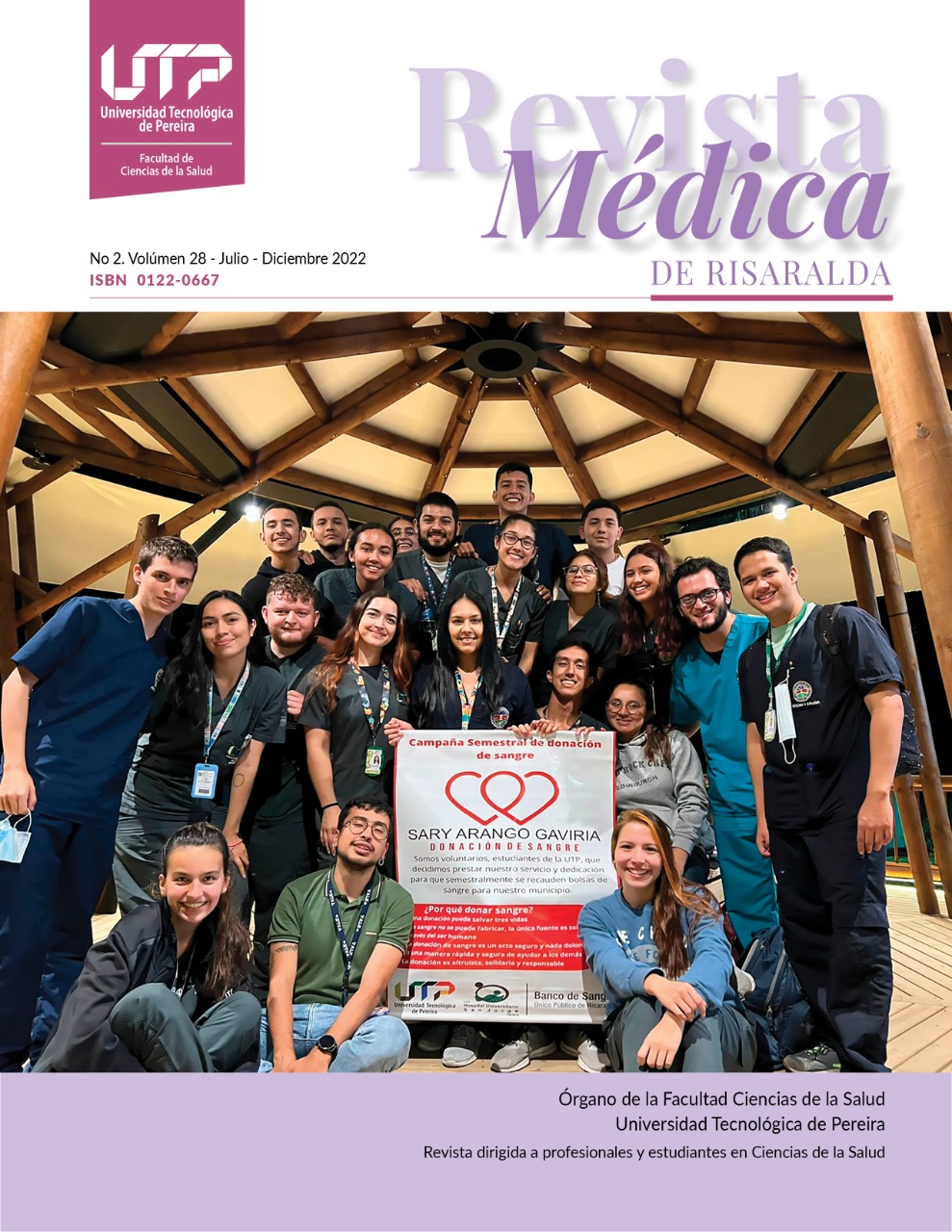Español
Neumoperitoneo inducido para el tratamiento de la hernia inguino - escrotal gigante: a propósito de un caso.
DOI:
https://doi.org/10.22517/25395203.25132Keywords:
Hernia incisional, neumoperitoneo, hernioplastiaAbstract
SummaryIntroduction: The procedure of progressive preoperative pneumoperitoneum for the management of giant hernias with "Loss of ownership" or "Loss of right to domicile" was introduced in 1940 by Goñi Moreno in Argentina, followed in later years by authors such as Herszage, Berlemont, Koontz, Gravez and in Mexico Martínez Munive, all with some interesting variations of the original method. Its use is recommended for previous preparation of patients with giant hernias and large contents of viscera in the hernial sac, in which it would not be possible to re-introduce and perform hernioplasty, or in which its forced reduction could lead to the patient to the development of an abdominal compartment syndrome in the immediate postoperative period.
Clinical case: A 65-year-old male patient with a clinical picture of 1 month of evolution characterized by pain in the left inguinal region. There was evidence of a giant left inguine scrotum, not reducible, with approximately 40% abdominal contents.
Discussion: One of the great problems of herniated abdominal wall is the presence of a large hernia sac, long evolution that contains such amount of intestinal loops, which leads to what has been called, hernias with "loss of domain "or" loss of right to domicile "in which the hernia content exceeds the capacity of the abdominal cavity to receive again such amount of viscera, without leading to respiratory failure.
Key words: Incisional hernia, hernioplasty, pneumoperitoneum, complications.
Downloads
References
Moreno IG. Chronic eventrations and large hernias: preoperative treatment by progressive pneumoperitoneum—original procedure. Surgery. 1947;22(6):945–53.
MORENO G. Eventración crónica gigante preparada con neumoperitoneo y operada. In: Informe preliminar Buenos Aires: XXII Congreso Argentino de Cirugía. 1940.
Martí Obiold R. LM. Neumoperitoneo, cirugiía de la pared abdominal. Guía clínica la Asoc Española Cir. 2002;16–24.
Balagué, C., Targarona, E. M., & Trias M. Cirugía laparoscópica e infección quirúrgica. Cir Esp. 2000;67(2):184–91.
Raynor RW, Del Guercio LRM. The place for pneumoperitoneum in the repair of massive hernia. World J Surg. 1989;13(5):581–5.
Caldironi MW, Romano M, Bozza F, Pluchinotta AM, Pelizzo MR, Toniato A, et al. Progressive pneumoperitoneum in the management of giant incisional hernias: a study of 41 patients. Br J Surg. 1990;77(3):306–7.
Munegato G, Grigoletto R, Brandolese R. Respiratory mechanics in abdominal compartment syndrome and large incisional hernias of the abdominal wall. Hernia. 2000;4(4):282–5.
Ponzio S, Tramontano R, Ambu W, Malandrino G, Fraccalini M. Proposal for the use of preoperative pneumoperitoneum in the treatment of large bilateral inguinal-scrotal hernias. Minerva Chir. 1998;53(4):281–3.
Bebawi MA, Moqtaderi F, Vijay V. Giant incisional hernia: staged repair using pneumoperitoneum and expanded polytetrafluoroethylene. Am Surg. 1997;63(5):375–81.
Cady B, Brooke-Cowden GL. Repair of massive abdominal wall defects. Combined use of pneumoperitoneum and Marlex mesh. Surg Clin North Am. 1976;56(3):559–70.
Coelho JC, Brenner AS, Freitas AT, Campos AC, Wiederkehr JC. Progressive preoperative pneumoperitoneum in the repair of large abdominal hernias. Eur J surgery= Acta Chir. 1993;159(6–7):339–41.
Mason EE, Dayton MT. Neumoperitoneo en la hernia gigante. Hernia. 1995;3:505–13.
Murr MM, Mason EE, Scott DH. The use of pneumoperitoneum in the repair of giant hernias. Obes Surg. 1994;4(4):323–7.
Koontz AR, Graves JW. Preoperative pneumoperitoneum as an aid in the handling of gigantic hernias. Ann Surg. 1954;140(5):759.
Dumont F, Fuks D, Verhaeghe P, Brehant O, Sabbagh C, Riboulot M, et al. Progressive pneumoperitoneum increases the length of abdominal muscles. Hernia. 2009;13(2):183–7.
McAdory RS, Cobb WS, Carbonell AM. Progressive preoperative pneumoperitoneum for hernias with loss of domain. Am Surg. 2009;75(6):504–9.
Downloads
-
Vistas(Views): 667
- PDF (Español (España)) Descargas(Downloads): 278
- PDF Descargas(Downloads): 94
Published
Versions
- 2022-12-27 (4)
- 2022-12-21 (3)
- 2022-11-03 (2)
- 2022-10-30 (1)
How to Cite
Issue
Section
License
Cesión de derechos y tratamiento de datos
La aceptación de un artículo para su publicación en la Revista Médica de Risaralda implica la cesión de los derechos de impresión y reproducción, por cualquier forma y medio, del autor a favor de Facultad de Ciencias de la Salud de la Universidad Tecnológica de Pereira. 1995-2018. Todos los derechos reservados ®
por parte de los autores para obtener el permiso de reproducción de sus contribuciones. La reproducción total o parcial de los trabajos aparecidos en la Revista Médica de Risaralda, debe hacerse citando la procedencia, en caso contrario, se viola los derechos reservados.
Asimismo, se entiende que los conceptos y opiniones expresados en cada trabajo son de la exclusiva responsabilidad del autor, sin responsabilizarse ni solidarizarse, necesariamente, ni la redacción, ni la editorial.
Es responsabilidad de los autores poder proporcionar a los lectores interesados copias de los datos en bruto, manuales de procedimiento, puntuaciones y, en general, material experimental relevante.
Asimismo, la Dirección de la revista garantiza el adecuado tratamiento de los datos de carácter personal



